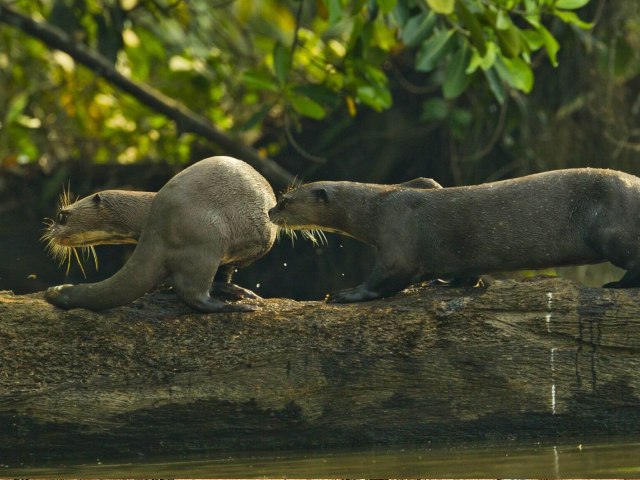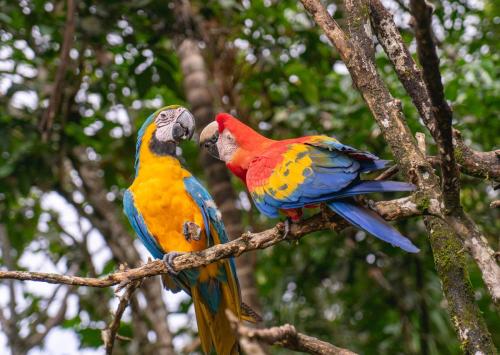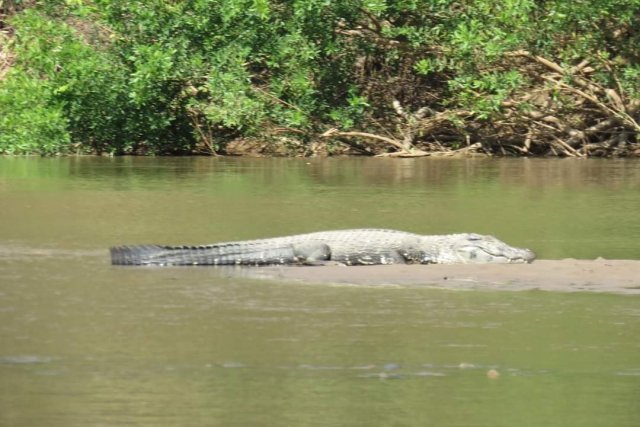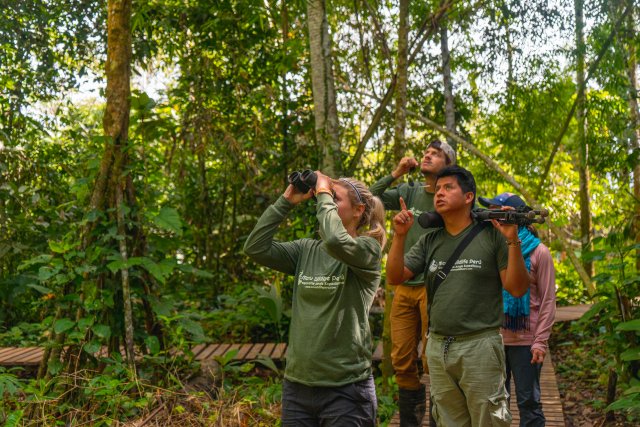What Animals Can You See In Sandoval Lake?

Is It Worth Visiting Sandoval Lake?
April 9, 2024
The Ultimate Guide For Visiting Sandoval Lake In Peru
April 21, 2024Located in the remote depths of the Peruvian Amazon Jungle, Sandoval Lake is a truly magnificent site to visit.
Tucked away from the fast-flowing river of Madre de Dios, this highly biodiverse ecosystem is full of incredible animal and plant species.
In this guide we’ll explore what animals you can expect to see when visiting Lake Sandoval, as well as some other tips to get the most out of a visit to this beautiful, natural site.
What Animals Can You See In Sandoval Lake?
Quick Answer: There is an abundance of incredible animals to be seen in and around the lake, with researchers estimating over 1000 species in total.
The Giant River Otter remains the star highlight, which is otherwise difficult to find along the faster-flowing Amazon Rivers. Growing up to 1.8m in length, they are the largest species of Otter on the planet.
In and around Sandoval Lake we’ll also be able to spot apex predators such as the Black Caiman, as well as harmonious turtles and Arapaima – which are among the largest species of freshwater fish.
Soaring high above the jungle canopy we can also find numerous species of birds that love to visit Sandoval Lake. Macaws are a standout, which can be seen with ease given their bright blue and yellow feathers. Several species of Hummingbird can also be spotted too, such as the Blue-tailed Emerald.

How To Maximize Your Chances Of Seeing Animals In Lake Sandoval
Lake Sandoval is an amazing place in that you are almost guaranteed to see different species regardless when you come. This includes Macaws, Black Caiman and different species of fish within the lake. However, going with a professional guide makes things much easier.
This is because the guide will know where different species of animals typically hang out. This includes Monkeys and the infamous Giant River Otter, although it’s usually possible to see many others too.
On a Lake Sandoval Tour you’ll also have a boat ride included, meaning you can venture into the middle of the lake with ease where it’s typically easier to spot different species. We highly recommend heading on our 3 Day Sandoval Lake Tour, where you’ll stay at a remote jungle lodge and have all meals included. You’ll also get to explore deeper into the Tambopata Jungle, visiting unique areas such as the Macaw Clay Lick in Collpa Chuncho.
Sandoval Lake Animals FAQ
Here we’ll now answer some of the most frequent questions we get about spotting animals in Sandoval Lake.
Which Months Are The Best For Spotting Animals In Lake Sandoval?
Typically, the shoulder months are best for spotting wildlife in Lake Sandoval. This is because the heat and levels of rain are not as excessive as other months. The very best months are May and June, although July and August are also highly recommended. This is also the same for the rest of the Tambopata region, and if planning on seeing more then we highly recommend reading this comprehensive Tambopata Guide.
Are There Any Bad Months For Seeing Animals In Lake Sandoval?
It’s first important to mention that every month has its own particular advantages, and you’ll still see wildlife regardless. However if we had to pick a month that is not so good, then it would be November. Temperatures are still quite high, and this month also marks the first heavy month of rainfall which can disturb and disperse wildlife.

Can You See Animals In The Wet Season?
Whilst many think the entire wet season is bad for seeing animals, it does actually make it easier to see certain species. This is typically during the latter stages of the wet season, such as the months of February and March. Here it will be easier to see birds and certain mammals due to there being more trees bearing fruit, as well as aquatic species within the lake too.
What Animals Can You See In Sandoval Lake?
And that’s all for this guide on the different species of animals that you can see in Sandoval Lake.
Whilst most known for its abundance of Giant River Otters, Lake Sandoval is a highly biodiverse area which is home to many other exotic jungle species. This includes Black Caiman and Arapaima within the lake, as well as Monkeys and Macaw around its periphery.
Of course certain times can affect your experience in Lake Sandoval, so it’s a good idea to plan your visit depending on what you want to see and do (usually the months of May until August are best for wildlife spotting). Be sure to read more about the best time to to visit Tambopata Jungle.



